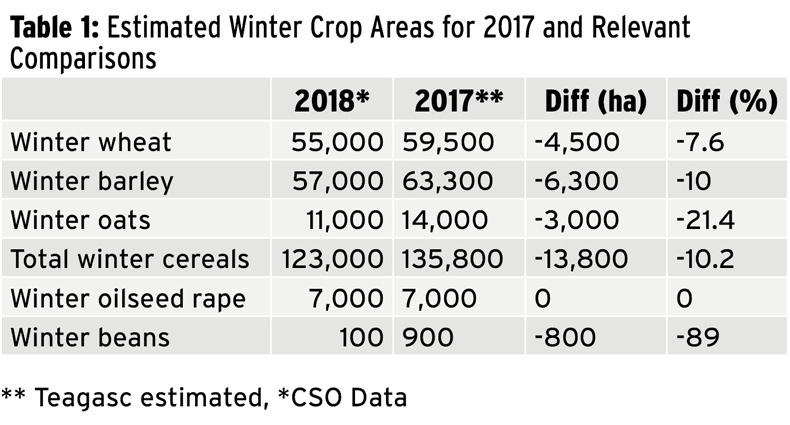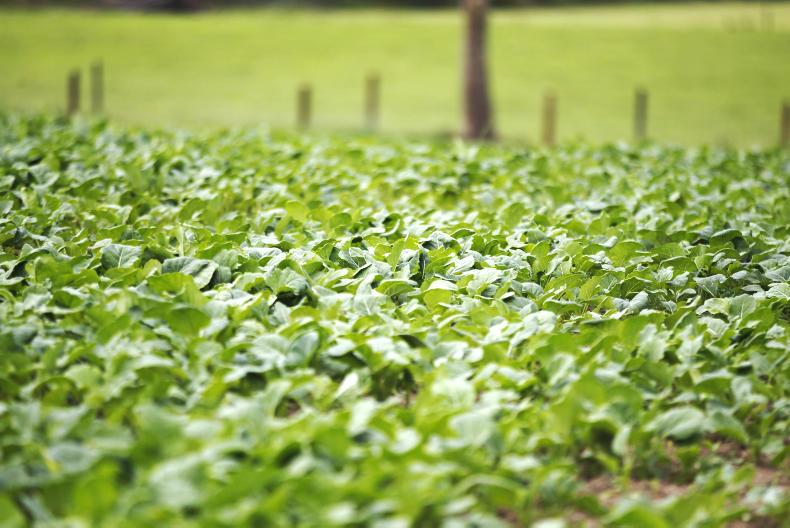Autumn plantings are estimated to be back by just over 10%, according to Teagasc’s April tillage update. Not only that, but on average, growth of winter crops is 10 to 14 days behind normal.
“The wet autumn and spring means that very few crops are up to date with weed control, fertiliser and fungicide,” said Ciaran Collins, Teagasc tillage specialist.
“A small proportion has received nothing to date. Winter barley, which has not received the first split of nitrogen, or had weeds controlled, will more than likely suffer a yield reduction.”
Meanwhile little progress has been made with spring planting. According to Teagasc, many crops are now past their optimum - and in many cases profitable - planting dates.

“Little or no spring planting has been done to date. Spring wheat, spring oats and beans are past their optimum planting date. Crops planted from now on will be lower-yielding and will result in a late harvest,” said Shay Phelan, Teagasc tillage specialist.
He added that the Department of Agriculture is in talks with the European Commission to get some relief for farmers on the three-crop rule.
“Watch this space carefully in the coming days,” he said.
Teagasc is advising malting barley growers to err on the lower side of nitrogen applications to ensure specifications are achieved. It also said that tillage and livestock farmers have opportunities to co-operate this year to replenish forage feed stocks across the country.
“Tillage farmers are looking for rotational opportunities and there is still time to plant maize and beet for sale locally. However tillage farmers need to be confident a suitable arrangement is in place so that the fodder can be delivered and payment received. These crops will also help to spread the workload which is mounting on tillage farms at present,” said Michael Hennessy.
Read more
Calls for derogation on three crop rule
Autumn plantings are estimated to be back by just over 10%, according to Teagasc’s April tillage update. Not only that, but on average, growth of winter crops is 10 to 14 days behind normal.
“The wet autumn and spring means that very few crops are up to date with weed control, fertiliser and fungicide,” said Ciaran Collins, Teagasc tillage specialist.
“A small proportion has received nothing to date. Winter barley, which has not received the first split of nitrogen, or had weeds controlled, will more than likely suffer a yield reduction.”
Meanwhile little progress has been made with spring planting. According to Teagasc, many crops are now past their optimum - and in many cases profitable - planting dates.

“Little or no spring planting has been done to date. Spring wheat, spring oats and beans are past their optimum planting date. Crops planted from now on will be lower-yielding and will result in a late harvest,” said Shay Phelan, Teagasc tillage specialist.
He added that the Department of Agriculture is in talks with the European Commission to get some relief for farmers on the three-crop rule.
“Watch this space carefully in the coming days,” he said.
Teagasc is advising malting barley growers to err on the lower side of nitrogen applications to ensure specifications are achieved. It also said that tillage and livestock farmers have opportunities to co-operate this year to replenish forage feed stocks across the country.
“Tillage farmers are looking for rotational opportunities and there is still time to plant maize and beet for sale locally. However tillage farmers need to be confident a suitable arrangement is in place so that the fodder can be delivered and payment received. These crops will also help to spread the workload which is mounting on tillage farms at present,” said Michael Hennessy.
Read more
Calls for derogation on three crop rule







 This is a subscriber-only article
This is a subscriber-only article












SHARING OPTIONS: